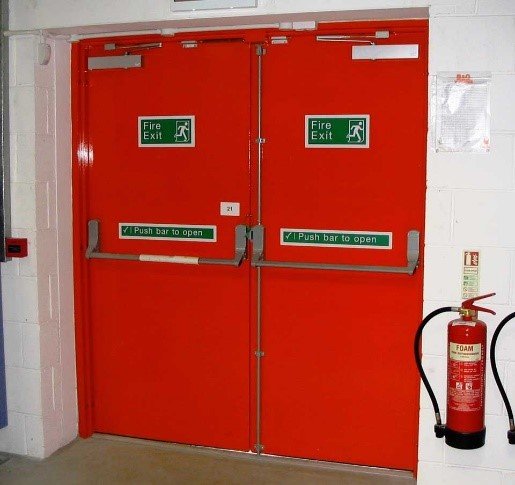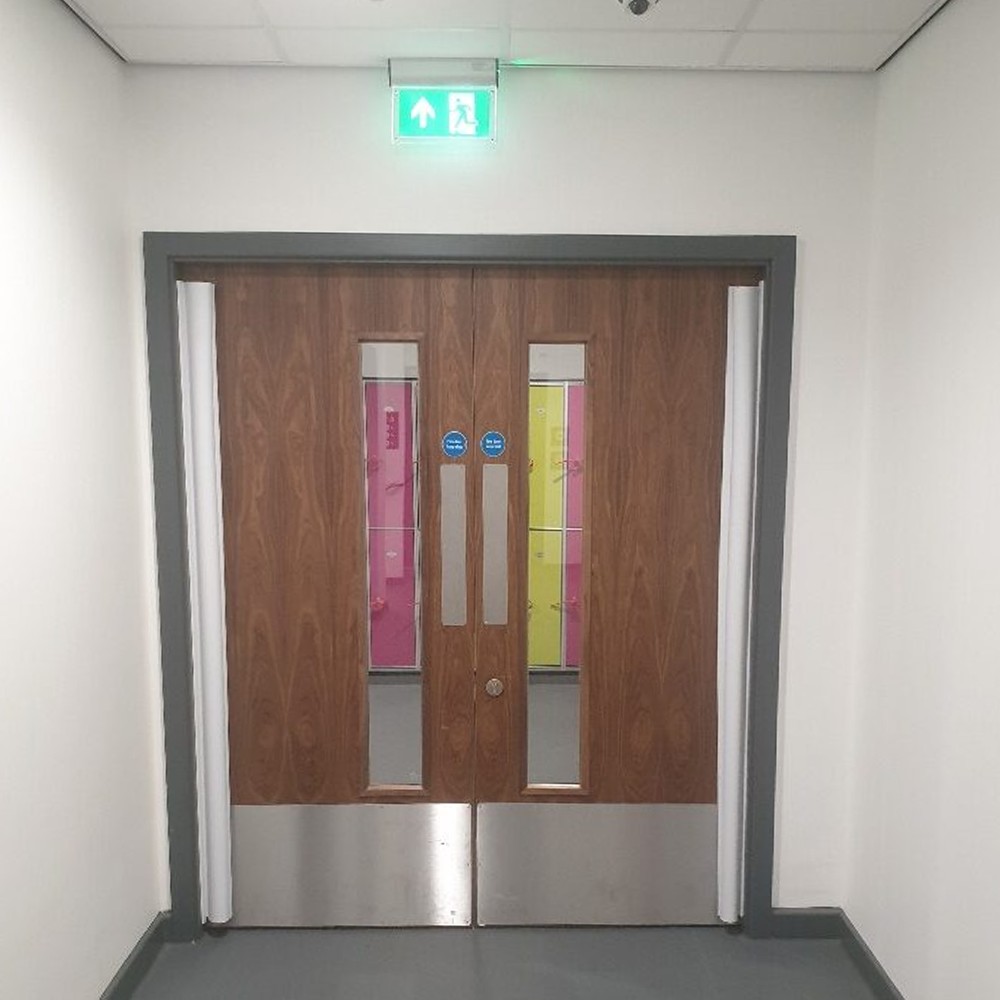Why Fire Doors Are a Must-Have for Residential and Commercial Residences
Why Fire Doors Are a Must-Have for Residential and Commercial Residences
Blog Article
Understanding the Different Kinds of Fire Doors for Boosted Safety
From basic fire-rated doors that protect versus flames to acoustic fire doors that use both fire resistance and audio insulation, each kind is made with specific features in mind. The combination of glass fire doors and the necessity of fire departure doors better highlight the multifaceted nature of fire door applications.
Standard Fire-Rated Doors
Basic fire-rated doors are a crucial element in making sure building safety and conformity with fire laws. These doors are specifically designed to withstand the spread of fire and smoke, offering important protection to owners and residential or commercial property. Constructed from products such as steel, plaster, and fire-resistant wood, they can hold up against heats and preserve structural honesty for varying periods, commonly varying from 20 mins to three hours.
The performance of basic fire-rated doors is quantified by their fire-resistance ranking, which is figured out through rigorous testing under regulated problems. This score shows the duration throughout which the door can contain flames and warm, thereby allowing added time for discharge and emergency situation feedback. In addition, these doors commonly include intumescent seals that expand when revealed to warm, further protecting against the passage of smoke and poisonous gases.
Setup of typical fire-rated doors must abide with rigid building regulations and criteria, such as those set by the National Fire Security Association (NFPA) and the International Building Ordinance (IBC) Normal evaluations and upkeep are necessary to ensure that these doors work correctly in an emergency. Effectively installed and kept fire-rated doors are vital in boosting total building security and reducing fire-related risks.
Smoke Doors
Smoke doors play a critical role in fire safety and security by particularly resolving the containment of smoke, which is frequently a lot more hazardous than fires during a fire occurrence. Smoke inhalation can cause severe breathing concerns, disorientation, and also deaths, making smoke doors a vital component in emergency situation planning. These doors are created to limit the activity of smoke between different compartments within a building, consequently providing safer emptying paths and decreasing possible damage to property.

Additionally, smoke doors are typically outfitted with automated closing mechanisms, set off by smoke alarm or fire alarm systems, to guarantee they close promptly throughout an emergency. By consisting of smoke, these doors aid maintain lower temperature levels and more clear presence in getaway courses, making them an indispensable element in comprehensive fire safety and security strategies. Their correct installation and maintenance are essential to make sure ideal efficiency when most required.
Acoustic Fire Doors
Acoustic fire doors give a twin feature in both fire security and audio attenuation, making them an important addition to buildings where noise control is important. These doors are engineered to not only fulfill strenuous fire resistance criteria yet additionally to significantly lower sound transmission, therefore improving general building efficiency.
The building and construction of acoustic fire doors typically includes a combination of thick products and specialized seals. Additionally, the door frame and seals are made to keep acoustic integrity while using durable fire resistance.
Acoustic fire doors are particularly helpful in atmospheres where personal privacy and peaceful are critical, such as medical facilities, hotels, and universities. They assist to keep a calm environment by decreasing the transmission of audio in between spaces or corridors while making certain conformity with fire security laws. Along with their useful benefits, these doors can be tailored to mix effortlessly with the building aesthetic appeals of a structure, ensuring that security does not come at the cost of layout.

Glass Fire Doors
Glass fire doors, often used in contemporary building designs, offer a blend of transparency and safety and security that traditional fire doors can not match. These doors combine the aesthetic appeal of glass with important fireproof residential properties, making them a suitable option for contemporary buildings. Engineered with specialized fire-resistant glazing, glass fire doors can endure high temperature levels and avoid the spread of fires and smoke for a defined period, normally varying from 30 to 120 mins.
The building of glass fire doors entails numerous layers of tempered glass, frequently treated with intumescent products that increase when exposed to warm, further boosting their fire-resistant capacities. These doors are not only functional in terms of fire security yet also enable natural light to penetrate via spaces, adding to power efficiency and a more welcoming setting.
In addition, glass fire doors can be incorporated with numerous framework products such as steel or aluminum, which give additional architectural support and toughness. Using such doors is specifically helpful in industrial, academic, and medical care settings where exposure and security are critical. By meeting rigid fire safety guidelines and maintaining an open, modern-day aesthetic, glass fire doors stand for an essential technology in fire-resistant building and construction.

Fire Escape Doors
Fire departure doors are an essential component of any useful source structure's security framework, created to give a swift and protected means of egress during emergencies. These doors are tactically located to make certain owners can swiftly and securely leave the facilities in the occasion of a fire or various other unsafe situations. Unlike basic doors, fire escape doors have to stick to rigid regulative criteria, ensuring they can carry out dependably under duress.
An essential feature of fire exit doors is their ability to open up easily from the within, generally outfitted with panic bars or click this press pads. This layout promotes fast emptying and protects against traffic jams that can take place during high-stress circumstances. Additionally, fire exit doors are frequently created from fireproof materials to avoid the spread of flames and smoke, thereby giving critical added time for discharge and firefighting efforts.
Another important element is the clear signage and illumination related to fire escape doors. Appropriate signage ensures that these exits are conveniently identifiable also in low-visibility conditions. Regular upkeep and assessments are vital to guarantee that these doors function properly when required. Ultimately, the efficiency of fire departure doors is an essential element in guarding lives and reducing building damages during emergencies.
Conclusion
In recap, understanding the different kinds of fire doors, consisting of standard fire-rated doors, smoke doors, acoustic fire doors, glass fire doors, and fire departure doors, is important for improving safety and security in buildings. Each kind provides certain benefits, from fire and smoke control to sound insulation and visual combination, making sure thorough security. Fire doors. Regular upkeep and conformity with security requirements are critical to guarantee their effectiveness in protecting passengers and facilitating risk-free discharge during emergency click reference situations
Report this page